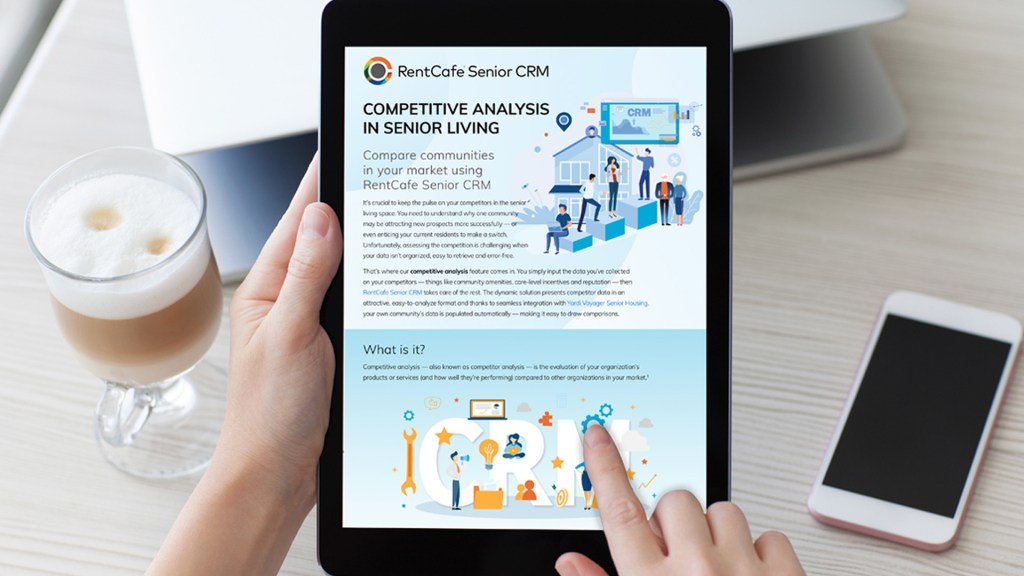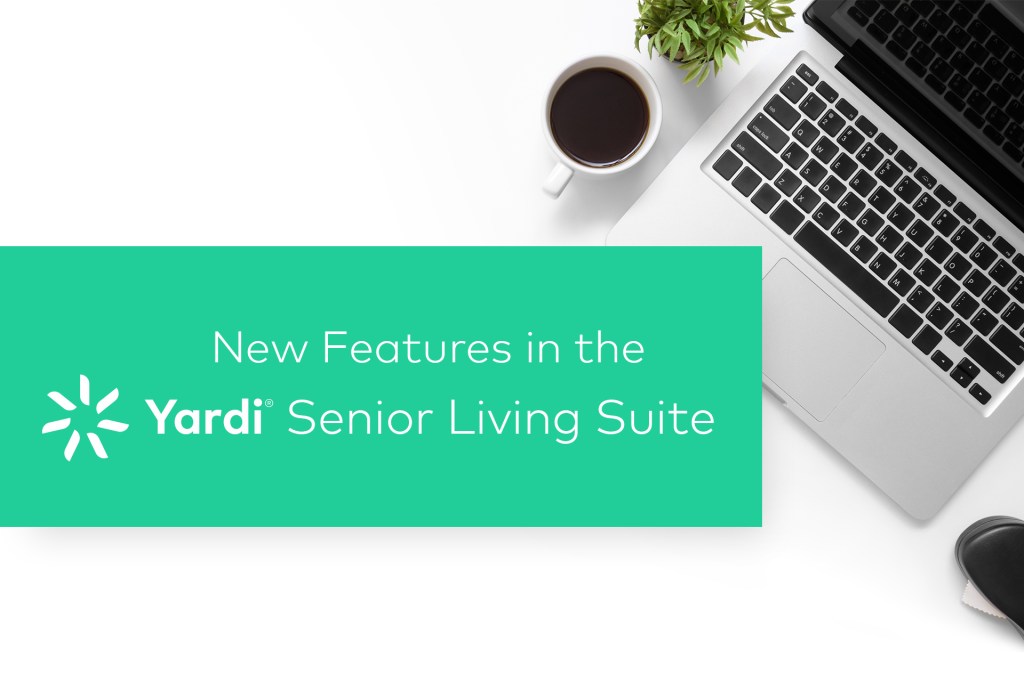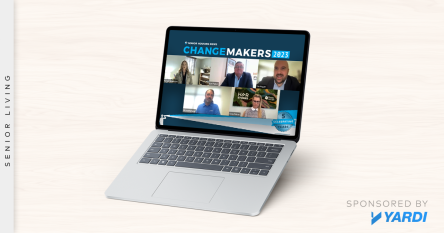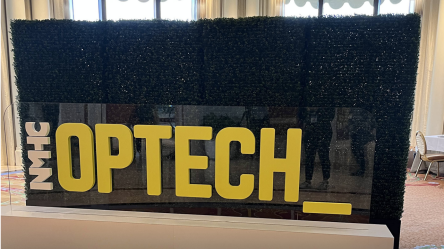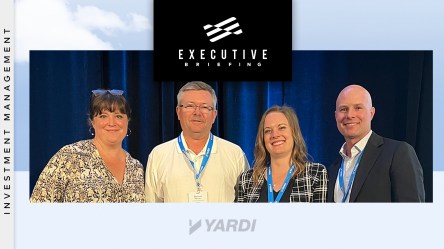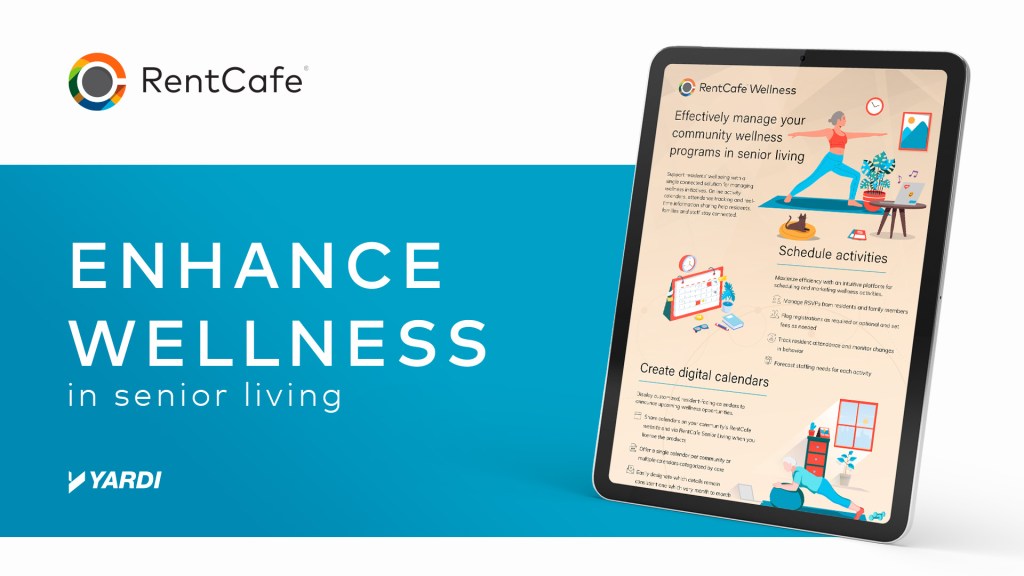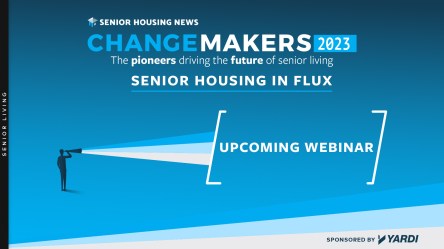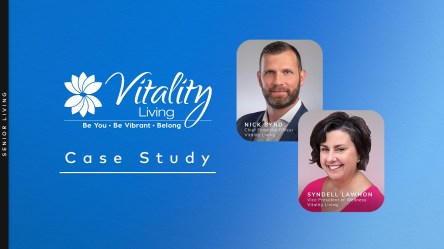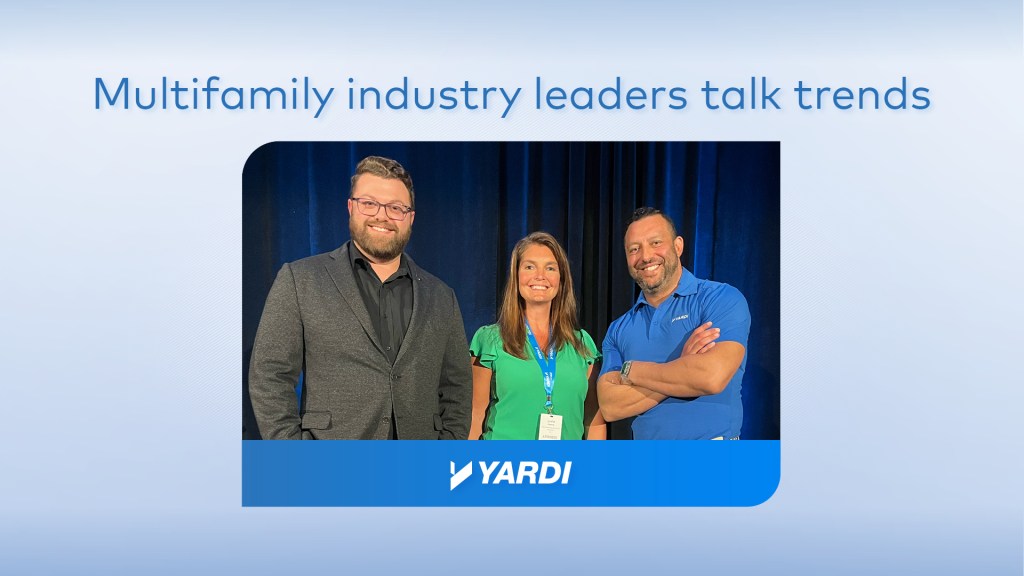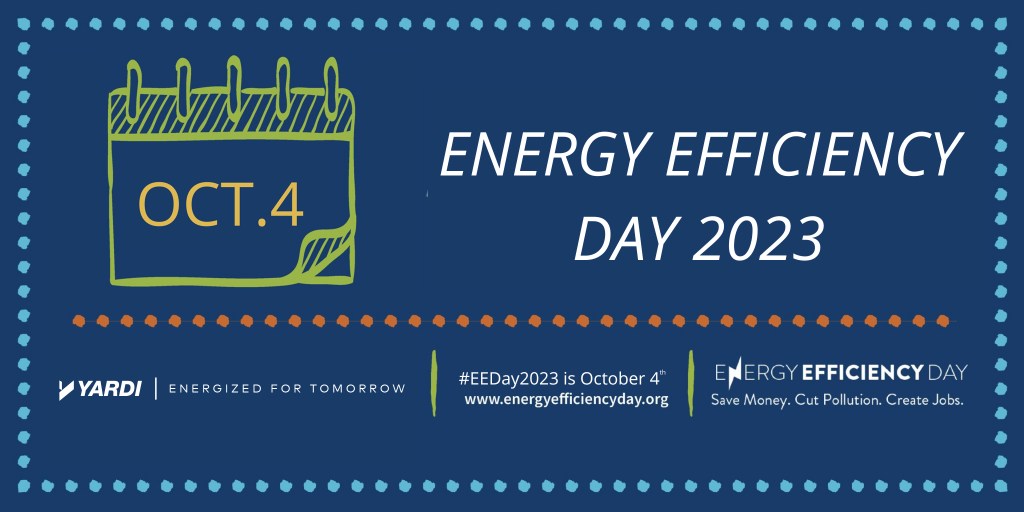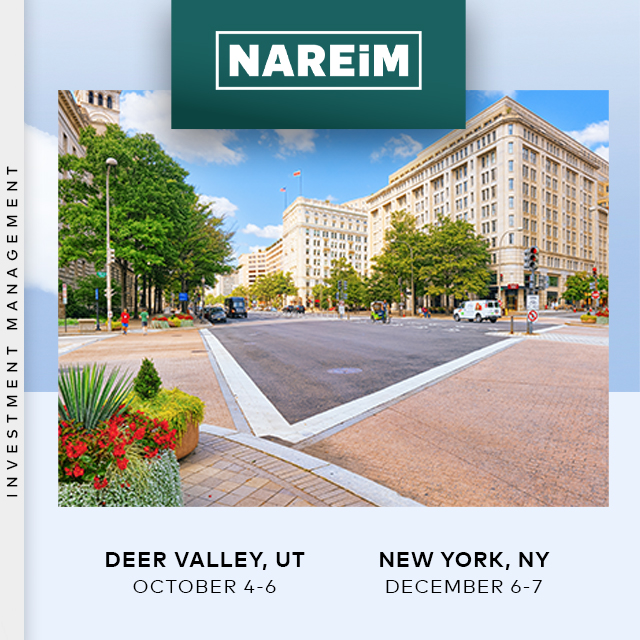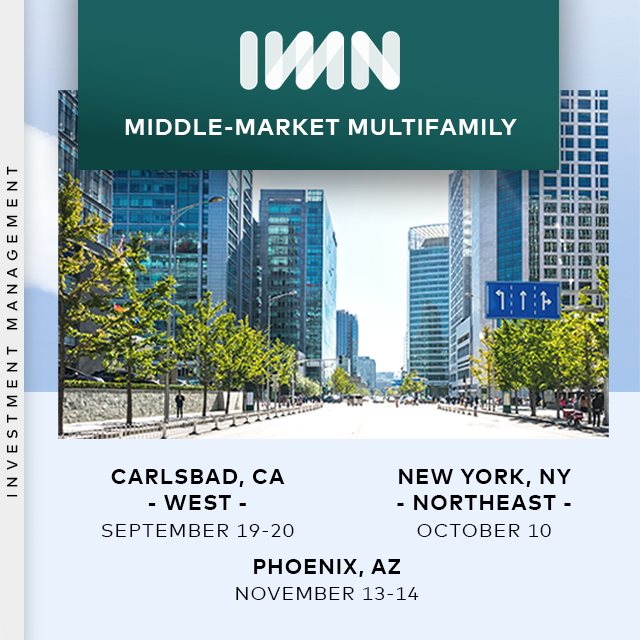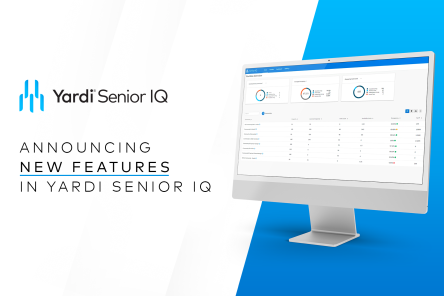‘Tis the season to share sweet and uplifting holiday stories, and there’s no shortage available from our senior living clients! We absolutely love spotlighting their activities and celebrations each year — from Christmas caroling to decorating parties — to bring some holiday cheer to The Balance Sheet. Enjoy the roundup of stories below. Making seasons bright at Pacifica Senior Living Pictured in a recent LinkedIn post, residents across Pacifica Senior Living communities have been decking the halls with Christmas decorations! They’ve also been enjoying events like Pacifica’s Jingle Bell Brunch — a gathering packed with festive food, Christmas caroling and mingling among residents, families and staff. And speaking of staff, Pacifica’s culinary teams are bringing seasonal cheer to their communities through a holiday dessert competition. Each chef is recreating a special dish, sharing the traditions and stories that inspired it! You can read about their merry creations on Pacifica’s blog. Creating holiday magic at Brightview Senior Living At Brightview Senior Living, residents brought the magic of Christmas to life with a festive poem reading. You simply have to watch the video posted on their LinkedIn, which happens to include some residents dressed for the season (spoiler alert, it includes Santa and Mrs. Claus). Brightview Severna Park also had a special visit from Saint Nick during the community’s 10 year anniversary party! The photos shared on social media remind us that it’s truly the most wonderful time of the year. Walking in a winter wonderland at Watercrest Senior Living Watercrest Senior Living is no stranger to holiday magic, which we got to see in this collection of photos on LinkedIn. They’ve created glorious winter wonderlands across their communities with the help of residents and staff! Keeping up with the spirit of the season, they’ve also shared photos from their festival of trees event and a snapshot of residents making holiday-themed crafts. Decorating for the season at Maplewood Senior Living We loved seeing how Maplewood Senior Living created festive fun for residents this holiday season! That includes ornament and wreath-making at Maplewood Orange, pictured on social media. Residents got the chance to hang their creations on trees throughout the community, as well as on their apartment doors. Happy holidays from team Yardi We hope you enjoyed the holiday highlight featuring our senior living clients. From all of us at Yardi, we wish you happy holidays and a wonderful new year! If you’re looking to connect with us in the new year and learn more about how we support our clients, reach out here....
Compare Your Communities
Using RentCafe Senior CRM
It’s crucial to keep the pulse on your competitors in the senior living space. You need to understand why one community may be attracting new prospects more successfully — or even enticing your current residents to make a switch. Unfortunately, assessing the competition is challenging when your data isn’t organized, easy to retrieve and error-free. That’s where our competitive analysis feature comes in. You simply input the data you’ve collected on your competitors — things like community amenities, care-level incentives and reputation — then RentCafe Senior CRM takes care of the rest. The dynamic solution presents competitor data in an attractive, easy-to-analyze format and thanks to seamless integration with Yardi Voyager Senior Housing, your own community’s data is populated automatically — making it easy to draw comparisons. Our new competitive analysis infographic shows more of how it works: What is competitive analysis? As defined in Business News Daily, competitive analysis — also known as competitor analysis — is the evaluation of your organization’s products or services (and how well they’re performing) compared to other organizations in your market. How does it work? Our competitive analysis functionality helps you centralize competitor data, streamline reporting and compare communities quickly and efficiently. You enter competitor information directly into RentCafe Senior CRM then unlock organized, intuitively presented insights that live in one secure place. Why do you need it? With organized competitor details and data-driven insights at your fingertips, you’re equipped to make faster, informed decisions for your community’s benefit — decisions to help your community stand out from the crowd. In fact, according to LinkedIn research, data-driven companies outperform their competitors by up to 20%. Explore self-competitor functionality Curious to see how your own communities stack up against each other? RentCafe Senior CRM offers self-competitor functionality! With real-time data flowing in from Voyager Senior Housing, you can conveniently compare your communities with precision. No more pulling information from multiple sources — wasting time and risking errors. Learn more and see competitive analysis in action RentCafe Senior CRM is a mobile-friendly sales and marketing solution designed for senior living operators. Ready to learn more and see competitive analysis in action? Reach out for a personalized...
New Enhancements are Here!
Yardi Senior Living Suite
Ready for new, easy-to-use features in the Yardi Senior Living Suite? We’ve got you covered! Our latest release (7.19) is available now and includes enhancements in RentCafe Senior CRM, Yardi EHR and eMAR. As always, these enhancements were made possible by our fantastic senior living clients. We appreciate your feedback — it helps us drive continuous improvements in our solutions each year. Read on for a highlight of what’s new in this release. Current clients can also watch the accompanying webinars, linked below. See what’s new in RentCafe Senior CRM RentCafe Senior CRM is our mobile-friendly customer relationship management platform built to help providers nurture leads, maximize occupancy and so much more. We’re continuously expanding the functionality to help our clients find success. Thanks to the latest release, RentCafe Senior CRM now offers: 1) A new speed to lead KPI that measures lead response times 2) The ability to analyze leads lost to competitors within prospect deactivation reports, analytics and tiles 3) An enhanced interface with ActiveDEMAND including options to populate web visit, call, text and email data Watch the CRM/CRM app new features webinar. Discover five fresh features in Yardi EHR Yardi EHR — our full-service electronic health record solution — is designed to help staff deliver the best resident care. We love speaking with clients to see how we can drive improvements to make that process easier. With the 7.19 release, Yardi EHR now includes: 1) A new resident overview dashboard that shows a quick view of records 2) Options to add body images to assessments 3) Custom data templates for progress notes 4) The ability to import vitals in Care Stream from the DS smart app 5) Interact Assisted Living Version 2.0 Watch the EHR/eMAR new features webinar and the EHR/eMAR setup new features webinar. Explore the latest in Yardi eMAR Yardi eMAR, our electronic medication administration record, takes the paperwork out of medication management. The solution is ever-evolving to support our clients through passing medications, communicating with pharmacies and more. Courtesy of the new release, Yardi eMAR now provides: 1) The ability to set default schedule durations for drug classifications in medication orders 2) An improved lab/radiology interface that alerts when lab results enter Yardi EHR 3) A fresh KPI card and offers a new button for viewing results linked to orders Watch the EHR/eMAR new features webinar and the EHR/eMAR setup new features webinar. Get in touch with us We hope you enjoy the latest enhancements! For a complete list of new features, clients can click Help in EHR or CRM and select Updates and New Features. If you’re new to Yardi senior living solutions and ready for a closer look, book a meeting with our...
Webinar Recap
2023 Changemakers + Yardi
To help professionals across senior living prep for industry changes ahead, we joined Senior Housing News (SHN) last month to host an insightful roundtable webinar — Senior Living in Flux: C-Suite Changemakers Discuss a Transforming Industry! Featuring experts Sarabeth Hanson of Harbor Retirement Associates (HRA), Earl Parker of Commonwealth Senior Living, Sevy Petras of Priority Life Care and Yardi Director of Healthcare Solutions Fil Southerland, the conversation offered tangible ways to navigate change expected for 2024. Read on to discover the webinar’s key takeaways on topics crucial to senior living today: Major ways the senior living industry is changing The importance of the middle market How to meet the needs of a new consumer Key ways technology is shaping the industry’s future 2023 Changemakers + Yardi expert share advice and insights When asked where they see the industry changing, the panelists shared a range of answers. Sevy focused on the power of technology and data, stating the two will push the industry forward come 2024. For Sarabeth, change is centered around serving a new consumer — baby boomers — as well as senior living staff, who now have different expectations than years prior. Earl brought the conversation back to technology, emphasizing the small margin for error in today’s industry and how that’s driving a focus on data. He spoke to Commonwealth’s success with Yardi Senior IQ — our business intelligence powerhouse — in harnessing real-time data to make sharper, informed decisions. Fil relayed Yardi’s focus on digital transformations and accelerating complex workflows to meet the needs of today’s communities. Sarabeth chimed in to share more positive experiences with Yardi’s evolving solutions, focusing on the benefit of using fully integrated tools that unite on a single platform. Shifting gears to speaking on the middle market,...
OPTECH 2023
AI-Powered, Human-Centered
From Nov. 1-3, NMHC OPTECH brought together the brightest minds and the latest innovations in the multifamily industry. Las Vegas was the hub of important conversations surrounding the present and future of real estate technology. Here’s a quick recap of the event, including more information about the new AI-driven, human-centered solutions we recently announced. Meet your maestro, Yardi Virtuoso Whether you went in person or were staying updated from the sidelines, one innovation stood out amidst the bustle of the conference: Yardi Virtuoso. By weaving artificial intelligence across the Yardi platform, you’re not just streamlining your processes — you’re transforming workflows. Virtuoso is your gateway to a more efficient future. It offers an AI-powered agent that seamlessly integrates with Yardi solutions, revolutionizing your workflow through the power of generative AI. This new tech also leverages machine learning, natural language processing and more powerful capabilities to help solve problems in your day-to-day and drive your business forward: Tap into the power of an AI-powered assistant to do more with less – effortlessly track tasks, generate reports and more with a simple voice command Significantly reduce invoice processing time and cost Improve prospect and resident communications with a bot that can chat, text, email and call It’s the future of AI in real estate. Virtuoso doesn’t just analyze, it harmonizes — bringing together disparate, manual parts of your workflow and creating an AI-powered, human-centered symphony. Stay updated. A medley of insights Yardi leaders contributed to pivotal discussions at the event, delivering insights on technology’s evolving role within the industry through the following sessions: Yardi Vice President Michael Tuer participated in the “Multifamily Technology Spending and Staffing” panel, offering insights on necessary adjustments the industry must make to navigate an increasingly tech-centric future. In “Operationalizing Resident Fee...
Measure The Benefits
Electronic Leasing For Senior Living
When you lack efficient leasing tools, turning senior living prospects into residents can be challenging. But how do you identify the best tools? Which solutions are built to last? Paper-based processes aren’t optimal due to the risk of manual errors and lost documents. Not to mention, they can be costly. Electronic leasing tools are much more efficient, especially when you opt for a fully integrated solution likes ours. With tools across the Yardi Senior Living Suite connecting on a single platform, you’re set to simplify move-in workflows, reduce expenses and make the prospect-to-resident journey seamless. To show you just how valuable electronic leasing tools are, we have a helpful cost analysis checklist in store. Learn more and get a glimpse at what the checklist offers below. What is electronic leasing? As part of an overall set of leasing tools, electronic leases are a digital version of the rental contract you already know. They replace paper leases and ancillary forms with secure, digitally stored files. But keep in mind that with the Yardi Senior Living Suite, you access more than just digital documents. We offer integrated electronic leasing tools that streamline every step of the move-in process. In short, you can easily generate custom leases in RentCafe Senior CRM, mark them for electronic signatures in RentCafe Senior Living Portal and automatically store completed documents in Voyager Senior Housing. Without electronic leases and an integrated workflow, on the other hand, you face: Perpetual operational costs Hours spent generating leases and ancillary documents Lost prospects who wish to sign forms remotely A halted sales cycle and decreased move-ins And more How to compare costs with our checklist Now that you know more about electronic leasing, we invite you to review our cost analysis checklist! It’s an intuitive...
Visit Booth 1219
At LeadingAge 2023
It’s almost time for the LeadingAge Annual Meeting and Expo, a one-of-a-kind senior living conference. Each year, the event offers an opportunity to network with likeminded professionals, gain fresh perspectives and discover innovative technology solutions shaping the industry’s future. Team Yardi is excited to attend, we invite you to visit booth 1219 to connect with us! We’ll show you the latest advancements in the Yardi Senior Living Suite, our single connected solution designed for the unique needs of senior living. We also have a special giveaway in store (spoiler alert, it involves delicious, Chicago-style popcorn). Get the details below — we hope to see you there. About LeadingAge 2023 Hosted at McCormick Place in Chicago, Illinois, this year’s LeadingAge Meeting and Expo is a can’t-be-missed experience packed with informative sessions. Focused on topics most relevant to the industry today, the sessions will offer impactful takeaways delivered by senior living experts. As LeadingAge puts it, it’s an event crafted to fuel your mission. The conference will span from November 5-8. If you’d like to explore what’s planned, preview the LeadingAge 2023 schedule. Meet with team Yardi & grab some gourmet popcorn Interested to see the newest innovations in the Yardi Senior Living Suite? Have questions for us? Wanting to simply come say hello? All are welcome at booth 1219 — we’ll be stationed there throughout the conference. If you’d like to schedule a specific time to meet, contact us and we’ll get something on the books. As mentioned, we’ve planned a neat surprise for our booth: gourmet popcorn! But it’s not just any popcorn — we’ll be offering snack bags from Garrett Popcorn Shops, a Chicago favorite. You can expect a combination of their staple flavors including CaramelCrisp, CheeseCorn, Buttery and Garrett Mix. Anyone who stops by is welcome to a snack bag, but we encourage you to stick around for a quick activity, too. We’ll have post-its available for you to write a short message sharing what you love about Yardi (plus a popcorn-themed board to stick your message to). If you’re new to Yardi solutions, you can also share what you love about the senior living industry — or what excites you about technology looking ahead. We hope you’ll pop in and participate! The popcorn and post-its will be available all hours the show floor is open on November 6 and 7. See you next week We’re looking forward to seeing you at LeadingAge 2023. If you’d like to get familiar with our dynamic senior living software before the conference, join an on-demand...
NMHC OPTECH
Yardi Reveals AI-Driven Tech
Yardi is showcasing new solutions at the 2023 NMHC OPTECH Conference & Expo, including the latest generation of Yardi Voyager, an artificial intelligence (AI) platform and a Microsoft® Power BI connector. The event is set to take place Nov. 1-3 in Las Vegas, Nevada, and is a yearly gathering for leading figures in multifamily operations. Yardi is proud to be a longtime supporter of NMHC OPTECH and is once again a Platinum Sponsor for the event. Booth 105 will showcase new AI-powered and human-centered technology from Yardi. This includes solutions designed to help operators “compose their future,” leveraging the combination of one connected system and AI to drive performance and maximize efficiency. Eventgoers can schedule demos with the Yardi team at the booth to see the new solutions for multifamily, including: Yardi Voyager 8, the latest generation of the industry-leading platform, now with a fresh update to further enhance the user experience. Yardi Virtuoso is an AI platform built to complement Yardi solutions. It leverages AI, large language models and machine learning to drive operational efficiency between people and technology. RentCafe CRM IQ, a customer relationship management system that provides full visibility into prospect, applicant and resident workflows, in addition to enabling centralized leasing and operations. RentCafe Chat IQ, an automated attendant that answers prospect and resident questions via chat, text, email and calls. Yardi Data Connect, a secure data feed from Voyager to Microsoft Power BI that allows more customization capabilities and inclusion of third-party sources, along with preconfigured dashboards. Book a meeting to see all new solutions up close during the conference or join an on-demand...
Ghostly Real Estate
Historic, and Haunted?
Halloween is around the corner and got us thinking some spooky thoughts—the market for “probably haunted” real estate. In New Orleans, “haunted” properties are so common that some properties include “not haunted” tags on their For Sale signs. Let’s delve into some practical advice for individuals interested in purchasing a potentially haunted property. In a recent article, a funeral home in Massachusetts was listed. Instead of the traditional “for sale” sign, the real estate agent decided to pique the interest of paranormal enthusiasts and staked a sign outside that read “probably haunted.” Is the property haunted? Nobody can know for sure, but given the history, it’s a possibility. Every state differs on what is to be disclosed to buyers. Material defects such as a leaky roof or older HVAC systems are disclosed, but life gets a bit more interesting when the house’s flaws may be tragic, gruesome or paranormal. A murder-suicide inside the house is considered a psychological stigma and does not constitute a material defect. One caveat is that a seller cannot misrepresent a property’s history. If asked about crime scenes or family tragedies, a seller must be truthful. Buyer Beware: We are Haunted. Caveat emptor is a common law doctrine that places the burden on the buyers to reasonably examine property before purchasing. A buyer who fails to meet this burden cannot recover for defects in the product that would have been discovered had this burden been met. Buyers need substantial “due diligence,” especially if the price of the home is “too good to be true.” Knock on the neighbor’s door or hire a medium, because you’ll likely never know if you don’t ask. Research local town legends and the historical records of the building, especially if it is a particularly older...
Executive Insights
Yardi IM Briefing
At the recent Yardi Advanced Solutions Conference in San Diego, leaders in real estate investment management exchanged insights into industry challenges, trends and how Yardi solutions make a difference in their business. Participants in the briefing were: Adam Vanni, senior portfolio manager for Fairfield, a San Diego-based multifamily property investment company with about 42,000 units under management Bailey Breish, CFO for Alturas Capital Partners, which manages a real estate investment fund with more than 45 assets. Donnie Penney, principal business analyst for Invesco, a real estate investment manager based in Dallas. Josh Gladstein, chief technology officer for Berkshire Residential Investments, which manages more than 120 multifamily properties and about $27 billion of assets under management from its Boston headquarters. Taylor Waldo, director of IT project management for San Francisco-based Prime Finance, which invests across all real estate asset classes through 10 active funds. The session was moderated by Yardi Investment Management team members Vicki Dodig, director of sales, and Susan Freehauf, senior director of professional services. Discussion at the session, edited for length and clarity, included: Keeping Pace with Evolving Technology Waldo: “The accounting cycle doesn’t change, the tax cycle doesn’t change. But our team members need to constantly adapt to get their business done. So we try to create a culture of change that helps our team feel comfortable. I work to make sure everybody from the leadership team understands the impact that change will have on them and be trained on using the new technology. If you want somebody to give up their beloved spreadsheets, there has to be something in it for them, even if that’s just words of encouragement, words of acknowledgment that they’re getting help to do things the right way. My job is to get all our business...
Optimize Community Wellness Programs
With RentCafe Wellness
Ready to effectively manage your community wellness programs? With RentCafe Wellness for senior living, you’re equipped with online activity calendars, attendance tracking and real-time information sharing — all accessible on a single platform — making it easy to optimize your wellness initiatives. Learn how RentCafe Wellness will take your wellness programs to the next level (and benefit your staff, residents and their families) in our infographic below. Schedule activities Manage RSVPs from residents and family members Flag registrations as required or optional and set fees as needed Track resident attendance and monitor changes in behavior Forecast staffing needs for each activity Create digital calendars Share calendars on your community’s RentCafe website and via RentCafe Senior Living Portal Offer a single calendar per community or multiple calendars categorized by care Easily designate which details remain consistent and which vary month to month Download and print calendars to display across your community Empower staff Unlock intuitive dashboards equipped with KPIs Generate analytic reports to assess an activity’s impact Plan and execute follow-up care using activity wellness information Save time thanks to simplified workflows Offer convenience Enable residents and families to sign up for activities, manage registrations and more from RentCafe Senior Living Portal and the mobile app Allow residents and responsible parties to submit monthly payments for paid wellness activities with Payment Processing Keep family members in the loop with real-time information sharing Ensure residents’ wellbeing is continuously monitored Help everyone stay connected from anywhere Learn more about RentCafe Wellness Let’s enhance your wellness programs together. Check out the full RentCafe Wellness infographic then select get in touch to schedule a personalized demo! Want to see RentCafe Wellness in action today? Watch this on-demand webinar....
Senior Living Webinar...
Changemakers + Team Yardi
The senior living industry is anything but static. Leaders are constantly challenged with new obstacles as the industry changes, prompting the need to get creative, develop unique strategies and keep a pulse on what disruption lies ahead. To help you assess what change is coming in 2024 — and learn thoughtful ways to navigate it — Senior Housing News (SHN) is hosting an impactful roundtable webinar this month! The webinar will feature an amazing panel including three of this year’s Changemaker honorees as well as a special guest from team Yardi. We’re pleased to sponsor the webinar and bring you fresh perspectives from each contributor. Explore the key takeaways to expect and get the registration information below. Get the details and meet the Changemaker panelists Not familiar with the Changemakers series? You can learn more in our recent wrap-up post here on the blog, but in short, it’s an inspiring interview series honoring a batch of senior living trailblazers. Yardi and SHN have partnered each year for the last five years to recognize these individuals, gathering their stories and advice for all to enjoy. With the 2023 Changemakers offering insights relevant to today’s operators, it’s only fitting they speak in the upcoming roundtable webinar. The webinar — Senior Living in Flux: C-Suite Changemakers Discuss a Transforming Industry — is set for October 18 from 1-2 p.m. CDT. In attending, you’ll have a front row seat to the panelists’ fresh ideas and viewpoints, learning exactly where they see the biggest potential for change in 2024. Get ready for insights from: Yardi client Earl Parker, Chief Executive Officer, Commonwealth Senior Living Yardi client Sarabeth Hanson, CEO and President, Harbor Retirement Associates (HRA) Sevy Petras, Chief Executive Officer, Priority Life Care Meet the special guest,...
A STAR is Born
Connect on ENERGY STAR Day, Oct. 11
October is Energy Awareness Month, which gives businesses and consumers lots of opportunities to learn about, adopt and promote energy-efficiency practices that reduce consumption and save money. First comes Energy Efficiency Day on Oct. 4. Even more opportunities come just a week later – on ENERGY STAR® Day, Oct. 11. ENERGY STAR Day seeks to use Facebook, Instagram, LinkedIn and other platforms to connect audiences, particularly underserved communities, to all the ways they can save with ENERGY STAR. The website for the program, which is administered by the U.S. Environmental Protection Agency (EPA), encourages partners, including Yardi, to “co-amplify the important message of energy efficiency and a clean energy future for all” with their own ENERGY STAR-tagged messages. Other ways to participate in ENERGY STAR Day include community service and education projects. By engaging all levels of employees in ENERGY STAR Day, employers can “provide valuable energy and money-saving opportunities … while enhancing your commitment to energy-efficiency, sustainability, and social responsibility,” EPA says. ENERGY STAR Day’s focus on equity stems from a study by the American Council for an Energy-Efficient Economy. It revealed that low-income households pay up to three times more on home energy costs than more affluent households, representing nearly 20% of their income. “Addressing this access disparity is a priority for EPA, and one we know we can address by working together with our partners,” the EPA says. See how you and your organization can participate in ENERGY STAR Day and enable ENERGY STAR to amplify your energy-efficiency success...
Vitality Living Case Study...
Yardi Senior Living Suite
How does Vitality Living achieve more with the Yardi Senior Living Suite? Find out in our latest case study! Featuring in-depth insights from Vitality’s chief financial officer and vice president of wellness, the resource sheds light on Vitality’s major successes with our single connected solution. Sound interesting? Explore the snapshot of Vitality’s story below. The challenge For financial accounting, Vitality used to rely on manual processes and disparate systems — taking time away from priorities, generating errors and causing confusion among teams. From monthly ACH pulls to building financial reports, key tasks became increasingly arduous. Vitality searched for a dependable, integrated solution to serve as their source of truth and alleviate the challenges they were facing. In terms of gathering data and presenting insights, Vitality also utilized manual processes — as their data was scattered across siloed solutions. Not only were these processes time-consuming, but they also prevented Vitality from unlocking insights regarding occupancy, falls and more, since data lacked the organization and presentation needed to reveal important trends. Not to mention, Vitality’s data wasn’t being updated in real time. Leaders sought a business intelligence solution that would present up-to-date, business-wide data in a visual format — all in one place. The solution After searching for a trusted technology provider known for creating integrated solutions on the cloud, Vitality began their journey with Yardi. Now, they’re driving success at every level with Voyager Senior Housing and Senior IQ. With Voyager, Vitality accesses automated accounting functions, real-time reporting and complete business oversight in one centralized location. “When you’re running a report in Voyager, you’re getting real-time data,” shared Nick Byrd, chief financial officer at Vitality. “The system is integrated with all of these pieces which allows us to get a true picture.” And thanks to...
Multifamily Leaders Talk Trends
Automation, fraud & training insights
At the 2023 Yardi Advanced Solutions Conference, Director of Sales Nima Farkhak led a panel with leading multifamily figures about trends impacting the industry — and the tech they’re using to get ahead. The conversation revolved around automation, fraud prevention and training. Particularly, how can multifamily organizations receive more employee buy-in when implementing new technology, and leverage that technology to maximize support for their employees? Panelists (pictured, right) included Leslie Henry, SVP of strategic solutions and development at Towne Properties and Josh Draughn, head of marketing at Weidner Apartment Homes. Read on for key takeaways. Automating early touchpoints significantly reduces site teams’ workloads Most multifamily operators agree that strategic automation is key to efficiency, resulting in streamlined workloads, satisfied employees and happier residents. “Automation is all about how we can give back valuable time to our associates, and we’ve found Chat IQ to be extremely helpful with that,” said Draughn. “Instant gratification is now expected, so our first automated engagement starts just five minutes after an initial contact. Then Chat IQ transitions the interaction to texting, which results in a faster response time.” Since implementing automation and Chat IQ, Draughn says that Weidner experienced a 15 percent reduction in advertising costs year over year. Transparent communication is key to achieving employee buy-in But there are challenges with implementing automation, artificial intelligence and new technology in general — especially when it comes to employee buy-in. Henry noted that most of Towne’s employees have been with the company for a long time and were opposed to change — until they saw its benefits firsthand. “After we implemented Chat IQ,” Henry said, “Our site teams quickly realized how useful it was in gaining back time. They love how it filtered out less promising leads in the beginning. But we also took their feedback if they didn’t like the way the bot was responding. We let them customize some aspects of the responses so there was more of a personal human touch.” Draughn agreed. “Getting buy-in at first will always be challenging,” he said. “But it’s all about how you communicate new changes and listen to their feedback. The human element in multifamily is always going to stay.” Deterring fraud with automation Multifamily organizations are also relying on technology to vet applicants more than ever. ID Verify uses facial recognition technology to confirm applicant identities. To do this, applicants take a selfie during the screening process, which is then matched with the official documents they submit. “Accuracy is one of the biggest benefits of automating the identity and income verification process,” Henry said, adding that automated technology has acted as a fraud deterrent, saving Towne thousands of dollars in the process. “In the beginning, I thought we were losing rentals,” Henry said. “But when we looked closer, it was because some IDs were so clearly fraudulent that the system weeded them out instantly. It saved us from dealing with them, them potentially living with us and us incurring bad debt.” Draughn agreed, noting that while there may be steps like taking selfies, genuine prospects will still follow through with the application. This allows leasing teams to avoid guesswork or repetitive communications. Streamlining online training As the pandemic shifted training methods from in-person to online, Towne Properties also turned to the learning management system Aspire for online training. “We’re learning about the product faster and it’s easier for us to train new employees,” Henry said, highlighting the ease brought by Aspire’s full integration with Towne’s solutions. “It feels good knowing that anyone can learn at their own pace with Aspire.” See it in action A connected solution can help you drive efficiency at every stage of your workflow, enhancing data connectivity and eliminating gaps. Want to see what this looks like in action? Watch a webinar to see how Yardi helps you streamline workflows, reduce fraud and enhance...
Energy Efficiency Day, Oct. 4
Share Your Ideas
On the 8th annual Energy Efficiency Day, Oct. 4, Yardi Energy will join thousands of organizations in the U.S. and Canada in sharing ideas for reducing energy waste and expanding energy efficiency. Energy Efficiency Day provides a forum for U.S. and Canadian corporations, local governments, universities, utilities and other organizations to document such initiatives as upgrading lighting, building insulation and heat pumps and establishing partnerships with local utility companies to reduce stress on the grid during peak demand. The day helps those occupying and investing in residential, commercial, affordable and other property types “share tips, tools and stories that promote the multiple benefits of energy efficiency, [which is] the cheapest, quickest way to meet our energy needs, cut consumer bills and reduce pollution,” says the Energy Efficiency Day organization, a coalition of U.S. energy efficiency advocacy groups. Energy Efficiency Day holds special resonance for Yardi because it involves “a core component of our mission as a real estate technology provider. It’s a great opportunity to focus attention on the critical issue of energy performance, spur action and inspire long-term thinking about what’s needed to create a positive energy future,” adds Joe Consolo, Yardi industry principal for energy. In March, Yardi received the 2023 ENERGY STAR® Partner of the Year Sustained Excellence Award after being named Partner of the Year for five consecutive years. The Yardi ESG software suite enables green energy procurement, whole-building energy water and waste data aggregation, and reduced energy usage in residential and commercial properties. The company has also maintained ENERGY STAR certification for its corporate headquarters in Goleta, Calif. Learn more about ways to maximize the impact of Energy Efficiency Day, including a toolkit for promoting your efforts on social media channels, joining the conversation and finding news about energy efficiency...
Yardi & NAREIM
Dynamic Collaboration
Since its founding in 1990, NAREIM has promoted best practices for real estate investment management with an array of education, networking, research, thought leadership and student program opportunities. Yardi has consistently supported NAREIM events as a sponsor, exhibitor and presenter over the years. Close out 2023 on a high note by joining the Yardi Investment Suite team at these dynamic NAREIM events: Event: NAREIM Executive Officer Meeting Date: Oct. 4-6 Place: Deer Valley, Utah Summary: Roundtable sessions and group discussions on building effective relationships, creating organizational strategies, and meeting the challenge of finding the right skills for asset management, transactions and portfolio management. Extras: Alpine slide and tubing down the 90K ski jump at the Park City Olympic Village. Meet with Yardi: Fill out a contact form. Event: NAREIM Capital Raising & IR Date: Dec. 6-7 Place: New York CitySummary: NAREIM Capital Raising & Investor Relations committee update, followed by sessions on managing ESG and DEI issues, elevating fundraising skills, raising capital from non-institutional sources and looking ahead to 2024. Extras: Networking dinner at the Liberty Bistro in downtown Manhattan. Meet with Yardi: Fill out a contact...
Energy Buzz
What’s New with ARPA-E
Here’s the latest of our periodic reports on projects undertaken by businesses and academic institutions that are sponsored by the Advanced Research Projects Agency-Energy (ARPA-E), the U.S Department of Energy’s R&D arm. Domestic energy production projects In August, the DOE announced funding for 18 ARPA-E projects designed to establish potential new areas of technology development and information that could bolster domestic energy production, cut consumption and reduce greenhouse gas emissions. The funding recipients include: WH-Power of College Park, Md., which will develop a zinc battery – inherently safer and less expensive than existing batteries – that can operate at both high and low temperatures in residential and grid-scale energy storage applications. C-Crete Technologies of San Leandro, Calif., which will create new insulation for large power transformers that could save the U.S. economy tens of billions of dollars annually by reducing the number of power outages associated with transformer failures. The University of Notre Dame, which will design a low-cost power transistor for devices used in electric vehicles, industrial power control and more. The proposed design could lead to possible energy savings of one quadrillion British Thermal Units per year, about 1% of annual energy consumption in the U.S. Perseus Materials of Knoxville, Tenn., which will develop new composite wind turbine blade manufacturing modes that could reduce labor costs, cycle times and factory footprints at the same output levels. Clean energy and data centers Another round of funding announced in June earmarked $100 million to support the commercialization of clean energy technologies. In May, 15 projects received $40 million from ARPA-E to develop high-performance, energy efficient cooling solutions for data centers that house computers, storage systems and computing infrastructure. Data centers account for approximately 2% of total U.S. electricity consumption while data center cooling can...
Yardi IM on the Road
Q4 Events Preview
The Yardi Investment Management team has a full slate of events across the country as the 4th quarter beckons. Along with cosponsoring several of these major industry forums and conferences, Yardi sends expert teams to demonstrate the value of the Yardi Investment Suite, an end-to-end technology platform that automates the real estate investment lifecycle. Key upcoming real estate investment events include: IMN Real Estate CFO & COO Forum Date: Oct. 2 Place: New York City Geared toward CFOs, COOs, tax and accounting officers, controllers and treasurers, the 11th annual staging of this event offers insights from real estate developers, lenders, REITs and operating companies. Sessions focus on trends in accounting, regulations and technology, along with fund raising, the power of AI and more. See more event information. IMN Real Estate Family Office and Private Wealth Management Forum Date: Oct. 4-5 Place: Miami This event showcases opportunities in the family office asset class, which allocates about 15% of its portfolio to real estate direct investments. This forum is suited to asset managers, debt and equity financiers, family business owners and investment consultants, among others. Learn more and meet with the Yardi team. IMN Middle-Market Multifamily Forum West, Northeast and Arizona Date: Sept. 19-20 (West), Oct. 10 (Northeast), Nov. 13-14 (Arizona) Place: Carlsbad, Calif. (West), New York (Northeast), Litchfield Park, Ariz. (Arizona) Targeting small and mid-sized multifamily owners and operators, these deep dives explore issues, opportunities, strategies and trends that impact a class that comprises 75% of all multifamily investors. Value-add strategies, working with institutional capital and the “acquisitions shark tank” are among the industry leader-led sessions on tap. Learn more about the Carlsbad, New York and Litchfield Park events. Learn more about the industry events that Yardi participates in as a sponsor, expert and...
Yardi Senior IQ
New Features, Fresh Enhancements
We’re thrilled to announce the newest features in Yardi Senior IQ — our dynamic business intelligence solution for senior living. From brand-new dashboards to improved reporting capabilities, each enhancement is available now! That means if you’re currently using Senior IQ, you can start enjoying the latest functionality right away. We roll everything out automatically to make the transition as easy as possible for our senior living clients. Ready to see what’s new? Read the highlights below to learn what this release brings to the table. Explore what’s new For starters, we’d like to thank our amazing senior living clients for providing feedback on Senior IQ. The following enhancements are inspired by what’s been shared with our team, and we’re pleased to continue evolving Senior IQ based on our clients’ wants and needs. First up, we’ve made it easier to use Senior IQ as a central location for gathering key data and generating reports — and to share that data with teams across your organization. Enjoy the ability to quickly reference miscellaneous reports and dashboards, displaying the KPIs most important to your organization, in routine meetings, variance calls, department check-ins and even at community stand-ups. Moving on, in relation to labor and staffing, we’ve added the ability to integrate your daily labor data. This allows you to analyze overtime — sorted by department and job positions — and identify areas for improvement. Next up, we have three new dashboards! Here’s a snapshot of what they offer: CRM success metrics dashboard — as the first of its kind, this CRM dashboard presents key metrics regarding occupancy, closing ratios, lead status, sales counselor performance and more. Leasing documents dashboard — serving as a usage check for those operating with electronic leasing, this dashboard captures...


